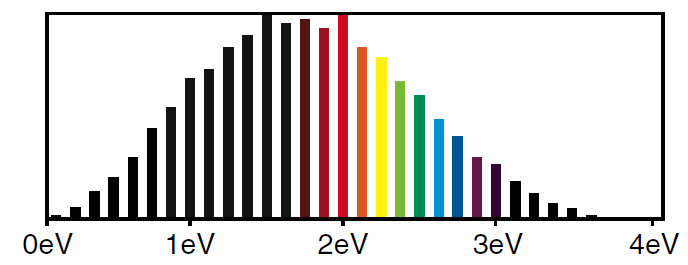
تاريخ الفيزياء

علماء الفيزياء


الفيزياء الكلاسيكية

الميكانيك

الديناميكا الحرارية


الكهربائية والمغناطيسية

الكهربائية

المغناطيسية

الكهرومغناطيسية


علم البصريات

تاريخ علم البصريات

الضوء

مواضيع عامة في علم البصريات

الصوت


الفيزياء الحديثة


النظرية النسبية

النظرية النسبية الخاصة

النظرية النسبية العامة

مواضيع عامة في النظرية النسبية

ميكانيكا الكم

الفيزياء الذرية

الفيزياء الجزيئية


الفيزياء النووية

مواضيع عامة في الفيزياء النووية

النشاط الاشعاعي


فيزياء الحالة الصلبة

الموصلات

أشباه الموصلات

العوازل

مواضيع عامة في الفيزياء الصلبة

فيزياء الجوامد


الليزر

أنواع الليزر

بعض تطبيقات الليزر

مواضيع عامة في الليزر


علم الفلك

تاريخ وعلماء علم الفلك

الثقوب السوداء


المجموعة الشمسية

الشمس

كوكب عطارد

كوكب الزهرة

كوكب الأرض

كوكب المريخ

كوكب المشتري

كوكب زحل

كوكب أورانوس

كوكب نبتون

كوكب بلوتو

القمر

كواكب ومواضيع اخرى

مواضيع عامة في علم الفلك

النجوم

البلازما

الألكترونيات

خواص المادة


الطاقة البديلة

الطاقة الشمسية

مواضيع عامة في الطاقة البديلة

المد والجزر

فيزياء الجسيمات


الفيزياء والعلوم الأخرى

الفيزياء الكيميائية

الفيزياء الرياضية

الفيزياء الحيوية

الفيزياء العامة


مواضيع عامة في الفيزياء

تجارب فيزيائية

مصطلحات وتعاريف فيزيائية

وحدات القياس الفيزيائية

طرائف الفيزياء

مواضيع اخرى
Probability Interpretation
المؤلف:
E. R. Huggins
المصدر:
Physics 2000
الجزء والصفحة:
980
1-1-2021
2021
Probability Interpretation
We have interpreted Figure (1) as representing the spread in energies of the photons in a 2 femtosecond red laser pulse. What if the pulse consisted of only a single photon? Then how do we interpret this spread in energies? The answer is that we use a probability interpretation. The photon in the pulse has different probabilities of having different energies.
In our discussion of light waves, we saw that the energy density in a light wave was proportional to the square of the amplitude of the wave. This is reasonable because while the amplitude of a wave can be positive or negative, the square of the amplitude, which we call the intensity is always positive. Probabilities, like energy densities, also have to be positive, thus we should associate the probability of a photon as having a given frequency with the intensity or square of the amplitude of the wave of that frequency.

Figure 1: Photon energies in single wavelength pulse of a red laser beam.
In Figure (2) we show the intensities (square of the amplitudes) of the harmonics that make up the single wavelength pulse. (This is plotted automatically by MacScope when we click on the button labeled Φ .)

Figure 2: Intensities of the harmonics are proportional to the square of the amplitudes.
We see that squaring the amplitudes narrows the spread. Figure (2) has the following interpretation when applied to pulses containing a single photon. If we measure the energy of the photon, we are most likely to get an answer close to 2 eV but there is a reasonable probability of getting an answer lower than 1 eV or even higher than 3 eV. The heights of the bars tell us the relative probability of measuring that energy for the photon.